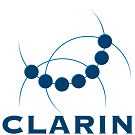Parallel corpora/en: Difference between revisions
Appearance
Updating to match new version of source page |
Updating to match new version of source page |
||
| Line 1: | Line 1: | ||
<languages/> | |||
Parallel corpora are central to translation studies and contrastive linguistics. Many of the parallel corpora are accessible through easy-to-use concordancers which considerably facilitates the study of interlinguistic phenomena. Such corpora are also a rich source of materials for language teaching. Furthermore, parallel corpora serve as training data for machine translation systems. | Parallel corpora are central to translation studies and contrastive linguistics. Many of the parallel corpora are accessible through easy-to-use concordancers which considerably facilitates the study of interlinguistic phenomena. Such corpora are also a rich source of materials for language teaching. Furthermore, parallel corpora serve as training data for machine translation systems. | ||
Latest revision as of 08:48, 16 July 2024
Parallel corpora are central to translation studies and contrastive linguistics. Many of the parallel corpora are accessible through easy-to-use concordancers which considerably facilitates the study of interlinguistic phenomena. Such corpora are also a rich source of materials for language teaching. Furthermore, parallel corpora serve as training data for machine translation systems.
Monolingual parallel corpora also exist, containing e.g. sentences and their paraphrases, or sentences and their simplified form.
